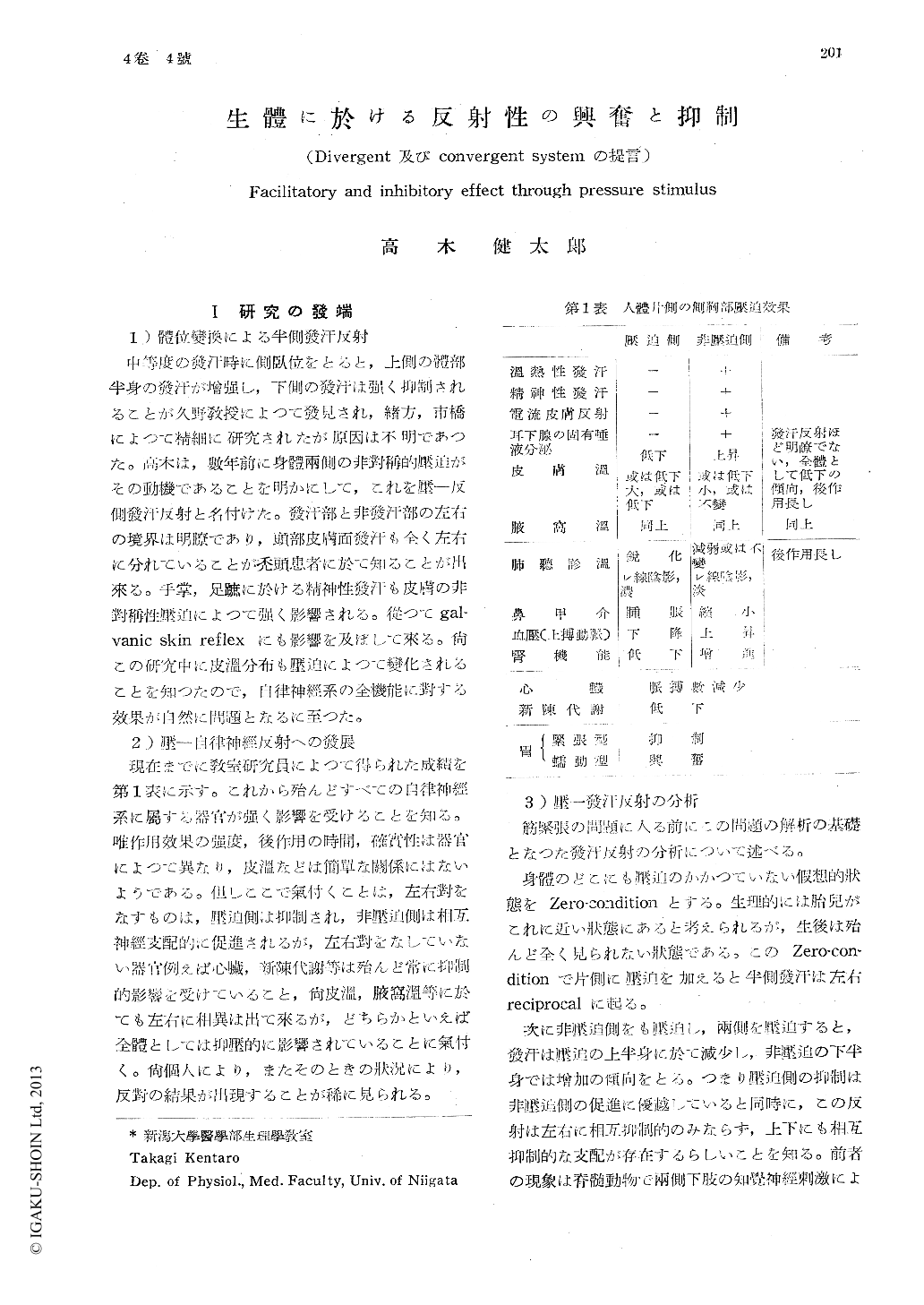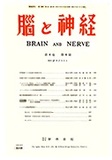Japanese
English
- 有料閲覧
- Abstract 文献概要
- 1ページ目 Look Inside
I 研究の發端
1)體位變換による半側發汗反射
中等度の發汗時に側臥位をとると,上側の體部半身の發汗が増強し,下側の發汗は強く抑制されることが久野教授によつて發見され,緒方,市橋によつて精細に研究されたが原因は不明であつた。高木は,數年前に身體兩側の非對稱的壓迫がその動機であることを明かにして,これを壓—反側發汗反射と名付けた。發汗部と非發汗部の左右の境界は明瞭であり,頭部皮膚面發汗も全く左右に分れていることが禿頭患者に於て知ることが出來る。手掌,足蹠に於ける精神性發汗も皮膚の非對稱性壓迫によつて強く影響される。從つてgal-vanic skin reflexにも影響を及ぼして來る。尚この研究中に皮温分布も壓迫によつて變化されることを知つたので,自律神經系の全機能に對する效果が自然に問題となるに至つた。
1. Unilateral mechanical pressure on the human body evokes reflectively the remarkable effects upon the activities of almost all auto-nomic organs: in general inhibitory effects on the ipsilateral side of the body or on metabo-lism and heart, and excitatory one on contra-lateral. Bilateral pressure causes universally inhibitory effects.
2. Uuilateral skin pressure in cat and man provokes extension of ipsilateral fore and hind limb, increased extenser tone and acceleration of proprioceptive reflex on ipsilateral side, and flexion, increased flexor tone, decreasing of proprioceptive refex on contralateral side. This postural pattern resembles to that of unilateral decerebellated or labyrintectomized animal.
We know from above results that the skin pressure gives remarkable influences upon not only the autonomic function, but also the ex-trapyramidal motor function.
I discovered by chance that nystagmus in unilateral labyrinthectomized rabbit are seen not only in the eye but in all limbs. Such rhy-thmic movements of the whole body as nysta-gmus or cold shivering are inhibited reflecti-vely by constant pressure on the skin and facilitated by touching. It was proved that the receptors of these reflexes exist in the cutis.
3. The pressoreceptors in the skin seem to be similar functionally to that in all other or-gan, for example in lung, carotis, stomach etc. and generally speaking, slow adapting fiber gives inhibitory effects on whole organism and rapid adapting one facilitatory effect. I pro-pose to call the nervous system that reacts inhibitory through slow adapting fiber, "con-vergent system" and the other that reacts facilitatory through radid adapting one, "diver-gent system".

Copyright © 1952, Igaku-Shoin Ltd. All rights reserved.


